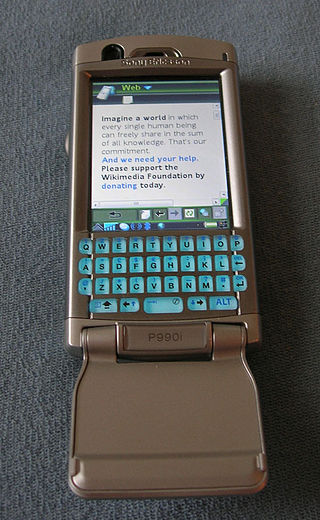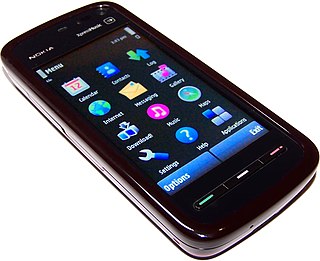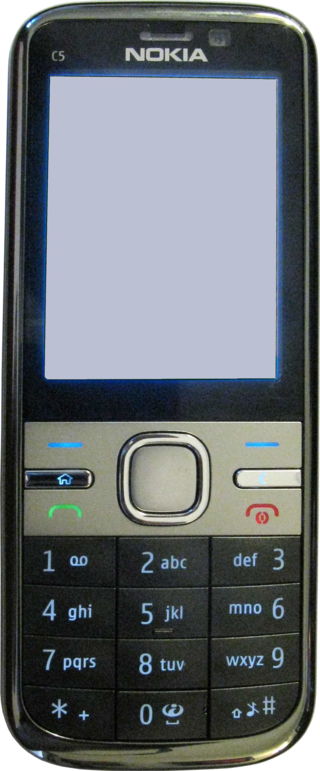History
The A1000 was released in Q4 2004, but was available only on contract through the 3 network, in just a few countries (mostly Australia, Austria, Denmark, Italy, Singapore [SingTel], Sweden and the UK). Although two colour schemes were available for the device at the time of release, 3 only offered it in the matte dark & light grey combination. Also, the phone was locked and its firmware contained 3 branding.
The phone raised interest of enthusiasts due to its advanced capabilities, and a few dedicated internet forums appeared. An unbranded firmware became available in these forums, but presented multiple problems and many considered it a leaked beta version. Also, software was developed to overcome limitations of the branded firmware, including an 'application picker' , a 'GPRS account editor' , and the ability to install software on external storage ).
When, after a whole year, the unlocked and unbranded A1000 appeared, its new firmware version made most of these applications obsolete, as it included their functions. This version of the A1000 was available in a glossy black finish.
The A1000 was among the first phones to use the TransFlash memory format as external storage. The device on its own only supports the smaller capacities of these cards, however it supports the use of adapters to use larger-capacity micro SD cards.

The Sony Ericsson P900 is a Symbian OS v7.0 based smartphone from Sony Ericsson.
The Motorola MPx200 smartphone was launched in December 2003 as a joint venture between Motorola and Microsoft. The mobile phone's Windows Mobile for Smartphone OS allows users to access email and the Internet, use MSN Messenger, and view documents in Microsoft Office formats much like other Windows smartphones such as the Samsung SGH-i600 or HTC Tanager. The MPx200, along with the Samsung SCH-i600, were the first Windows Mobile smartphone devices to have wide distribution in the United States. Previously, smartphone platform devices could only be purchased in the United States as part of development kits sold by Microsoft. The only U.S. carrier of the phone was AT&T Wireless; however, reports also suggest a somewhat limited number of devices with Cingular branding have appeared following the purchase of AT&T Wireless by Cingular.

The Nokia 6680 is a high-end 3G smartphone running Symbian operating system, with Series 60 2nd Edition user interface. It was announced on 14 February 2005, and was released the next month. The 6680 was Nokia's first device with a front camera, and was specifically marketed for video calling. It was also Nokia's first with a camera flash. It went on sale retailing for 500 euros. It was the spring-board onto the Nseries in April that year; its successor being the N70.

Motorola A925 is a 3G smartphone from Motorola using Symbian OS. Among the most notable features is its built-in A-GPS. The A925 was preceded by the featurewise essentially identical Motorola A920, and was succeeded by the Motorola A1000.
The Motorola ROKR, the first version of which was informally known as the iTunes phone, was a series of mobile phones from Motorola, part of a 4LTR line developed before the spin out of Motorola Mobility. ROKR models were released starting in September 2005 and ending in 2009. They were notable for incorporating support of media player features.

Sony Ericsson P990 is a smartphone and the successor of Sony Ericsson P910. The phone uses the UIQ 3 software platform, which is based upon Symbian OS 9.1. It was introduced on 11 October 2005, but had a long delayed market release only in August 2006.

The Sony Ericsson K800i, and its variant, the Sony Ericsson K790, are mobile phone handsets manufactured by Sony Ericsson. Launched in July 2006, the phones are the successor to the Sony Ericsson K750i. Both of the phones feature a 3.2-megapixel digital camera complete with a xenon flash, a protective lens cover, and a new "BestPic" bracketing feature, and are the first to be tagged with the Sony Cyber-shot branding. The new "BestPic" feature takes 9 full quality snapshots of a subject in quick succession, allowing the user to choose the best shots from them. On the entertainment front, the phones have a media player supporting MP3, AAC/AAC+/eAAC+ and WMA music files and 3GP/MPEG-4 video files. The phones also feature a RDS FM radio, and a Memory Stick Micro (M2) slot for expandable solid state memory. The K790/K800 models are also the first Sony Ericsson mobile phones to use ATI's Imageon 2192 graphics engine, which delivers a full 3D gaming graphics for Java and full support for its 3.2-megapixel camera. It is the phone used by James Bond in the 2006 Casino Royale film and trailers.
Motorola Rizr is a series of slide mobile phones from Motorola, and is one of the series in the 4LTR line. The first model was released in late 2006. It is a sliding phone, where the numeric keys are hidden beneath the screen of the phone when closed.
The Nokia 6275i is a CDMA mobile phone. Basically, it is a "candybar" version of the Nokia 6265. It has a 2.0-megapixel camera with flash, and a portrait mirror. The phone itself has 21 MB of memory, but it can use microSD cards to expand the memory capacity to 2 GB. It uses the Nokia Series 40 OS, and can connect to other devices using infrared, USB, and Bluetooth technology. The screen has a resolution of 240x320.

The Nokia 6120 classic is a mid-range smartphone from Nokia that was announced on 17 April 2007. It runs on Symbian v9.2 with a S60 3rd Edition FP1 user interface.
The Nokia 6000 series or Classic Business series is range of mobile phones marketed by Nokia. This family of phones is notable for their conservative, unisex designs, making them popular with business users.
The Nokia 3600 slide is a mobile phone by Nokia that was released in August 2008. The phone runs the Series 40 3rd Edition platform. This is classed as the 'low end version' of the Nokia 6600 slide, its major difference being the lack of 3G support.

The Sony Ericsson C905 is a high-end mobile phone in Sony's 'C' (Cyber-shot) range, which, along with the low-end 'S' (Snapshot) range cameras, supplants the earlier 'K' range of camera phones. It is the flagship model in Sony Ericsson's range for 2008 and it was released on 22 October 2008. It's the first 8-megapixel camera phone to be released outside Korea, while adding the Assisted GPS (A-GPS) and Wi-Fi function. It is also the first Sony Ericsson mobile phone to support the DLNA sharing network and is the first Cyber-shot phone to also be released for AT&T.

The Nokia 6280 Series, is a series of slider type phones first released in Q4, 2005.

Nokia 5800 XpressMusic is a smartphone part of the XpressMusic line, announced by Nokia on 2 October 2008 in London and started shipping in November of that year. Code-named "Tube", it was the first touchscreen-equipped S60 device by Nokia – essentially it was the first device to run Symbian^1, also known as S60 5th Edition, the touch-specific S60-based platform created by the Symbian Foundation. The touchscreen features tactile feedback.

The LG-KM900, or LG Arena, is an LG Electronics flagship multimedia phone for Q1 2009, succeeded by the LG GD900. Announced at the Mobile World Congress on February 16, 2009, the KM900 is the first phone to feature LG’s new 3D S-Class user interface.

The T-Mobile Pulse (sold as the CHT8000 in Taiwan) is an Android-powered phone manufactured by Huawei and rebranded by T-Mobile. It is available in many markets including the UK and The Netherlands. Compared to many Android phones released at the time it was relatively low cost - originally selling for £185 in the UK, the Pulse achieved a minimum price of £19.99 + £10 top up on PAYG before being discontinued in April 2011. This made it one of the cheapest Android powered smartphones available at the time. The Pulse was also marketed as being the first Pay As You Go phone running the Android OS.

The Nokia C5-00 is the first in the new Cseries of Nokia phones, announced March 2010. The C5-00 is a smartphone with messaging and social networking features, including, for example, Facebook and Flickr applications. The C5-00 allows multitasking and has a 2.2-inch (56 mm) display and a 5.0-megapixel camera. It also includes GPS and a free navigation courtesy of Ovi Maps. It runs on Symbian OS with S60 3rd Edition Feature Pack 2.

The Sony Ericsson Vivaz (U5i) is a smartphone, announced by Sony Ericsson on 21 January 2010. It was released on 5 March 2010 in the color schemes Moon Silver, Cosmic Black, Galaxy Blue and Venus Ruby.

The Motorola Droid Bionic is an Android-based, 4G LTE-capable smartphone designed by Motorola. It was originally scheduled for release in Q2 2011 but was delayed, eventually being released on 8 September 2011.













